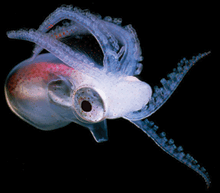 There are several classes of transformation event that could be mediated by natural competence and recombination. The first thing that I had to wrap my head around (after having come from the double-stranded break world of recombination) was to realize that uptake DNA recombining into a host chromosome is single-stranded. I’m more used to drawing recombination models involving two broken ends of a double-stranded molecule.
There are several classes of transformation event that could be mediated by natural competence and recombination. The first thing that I had to wrap my head around (after having come from the double-stranded break world of recombination) was to realize that uptake DNA recombining into a host chromosome is single-stranded. I’m more used to drawing recombination models involving two broken ends of a double-stranded molecule.So to kick things off, in the above figure, I’ve drawn what I think the joint molecule intermediates look like between polymorphic donor ssDNA invaders and recipient dsDNA substrates for the four major classes of transformation products I can envision.
The red (red/pink) lines indicate an ssDNA that’s found its way from outside the cell to the host chromosome (in blue/light blue). Aligned regions are base-paired. Unaligned regions are not...
The amount of transformation will depend not only on how many of a given joint molecule are formed, but also how they are resolved and the rate and directionality of “mismatch” correction.
One important aspect of the strand invasions depicted above will be the extent of heterology. The more polymorphisms in the donor sequence, the less stable the joint molecule will be.
Each class of polymorphism deserves special mention:
(1) Single nucleotide polymophisms: There are 12 possible heteroduplexes involving single-nucleotides, if we keep track of donor and recipient. So any of the 4 bases could go to any of the remaining 3... 3 X 4 = 12. In my preliminary analysis, I found nearly 39,029 SNPs between our reference Rd strain and the clinical isolate 86-028NP falling into each one of these different classes (with a paucity of G->C and C->G changes). Even without precisely measuring the frequency of transformation for each individual SNP, we may be able to estimate the relative transformation frequencies for these different classes of SNPs.
(2) Insertions: If the donor has an insertion relative to the recipient, recombination could yield an insertion. In the case of insertions, the uptake sequence can be anywhere on the fragment. base pairing of the substrate will require the formation of a loop. The size distribution of the input DNA will also dictate the size of possible insertional recombination. How the mismatch correction machinery handles insertional joint molecules like this is unclear to me. My preliminary analysis indicated 149 insertions in 86-028NP relative to Rd (mean size = 1162 bp, but the median only a few hundred).
(3) Deletions: I made this distinct from insertions for two reasons: (1) The uptake sequence (obviously) must flank the deleted segment. An absent piece of DNA can’t be used for uptake. This imposes directionality on deletions that’s distinct from insertions. (2) It’s unclear how the mismatch machinery would act on the two central joint molecules depicted... It restoration repair more likely in one case than in the other? My preliminary analysis indicates 137 deletions in 86-028NP relative to Rd (mean size 1904 bp, again with a much lower median).
(4) Rearrangements: I’ll give this very short shrift for now. If a particular piece of ssDNA spans a rearrangement breakpoint, then strand invasion of each end into two separate chromosomal positions could mediate an inversion or several other kinds of rearrangement. My preliminary analysis with MUMmer suggests ~9 inversions and 26 transpositions between the two strains.
There are many many ways in which rearrangements in the donor might produce fragments that could mediate a rearrangment of the recipient. It’s going to take some time to enumerate these. Indeed, even if the donor was perfectly colinear with the recipient, some fragments could still mediate rearrangements.
For example, looking at a close-up of the MAUVE output between Rd and 86-028NP shows that the rRNA gene cluster of 23S and 16S (in Red) often span the rearrangement breakpoints between the two strains:
 This could arise in a traditional mutational way (i.e. recombination between inverted repeats would cause an inversion), but could also be mediated by transformation. For example, if a DNA fragment that contained a bit of rDNA and a bit of flank first invaded the wrong rDNA copy, the other end could then grab the original flank... causing a rearrangement.
This could arise in a traditional mutational way (i.e. recombination between inverted repeats would cause an inversion), but could also be mediated by transformation. For example, if a DNA fragment that contained a bit of rDNA and a bit of flank first invaded the wrong rDNA copy, the other end could then grab the original flank... causing a rearrangement.That is, in the rearrangements-involving-repeats scenario, it would be quite possible to produce rearrangements distinct from either the donor or recipient DNA.
This is going to take a while to flesh out, as there are several possible outcomes to this sort of thing. It doesn't make things any easier that I also now have to consider that the chromosome is circular... sigh... I'd better try and remember what plectonemic and paranemic mean...
Nevertheless, the upside is that it will be possible to measure indel and rearrangement transformation rates with considerably more ease than the SNP class, due to the use of “spanning coverage”.

No comments:
Post a Comment